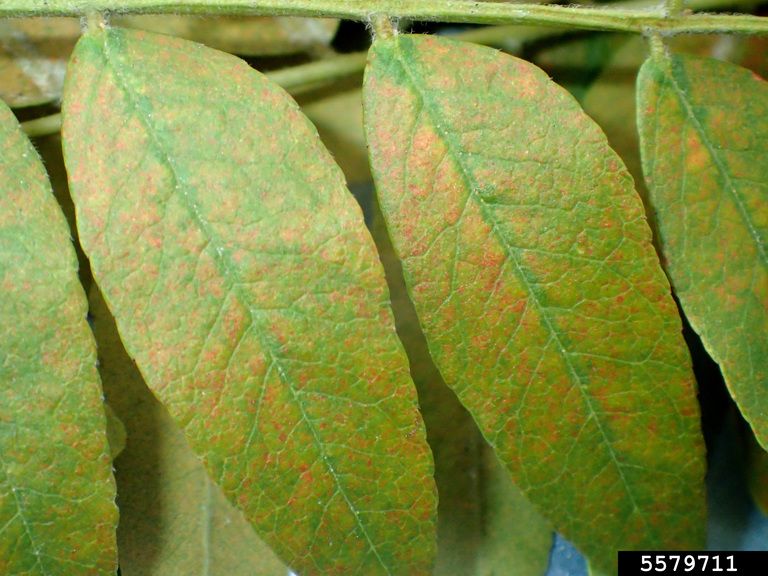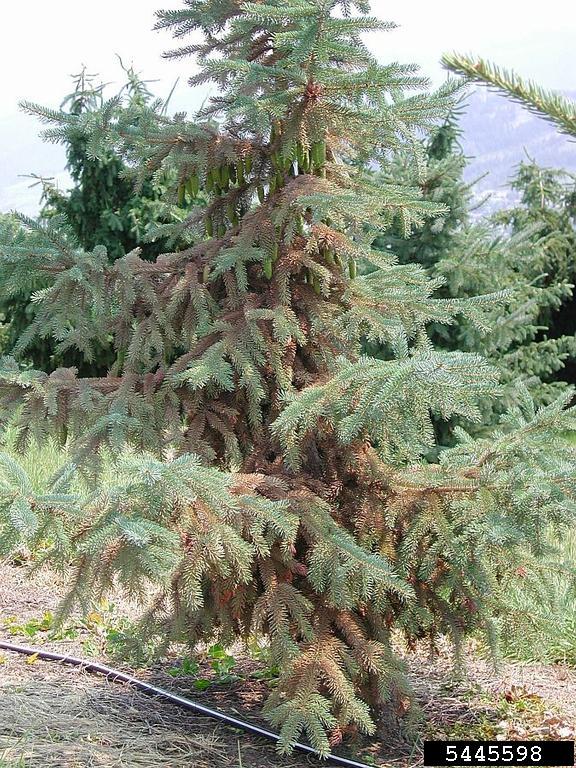Albeit tiny, spider mites can cause great damage to trees and plants. They feed on sugary sap, sucking on the plant’s energy reserves. If not controlled promptly, heavy infestations of spider mites can cause tree stress and decline. Understanding the early signs of spider mite infestation is the first step in successful management of tree pests and diseases. Read on to learn how to identify spider mites, what causes infestations, and how to get rid of and prevent these pesky pests!
What are Spider Mites?
Spider mites are small arachnids belonging to the Tetranychidae family. Unlike insects, they have eight legs and are closely related to spiders and ticks. These mites are notorious for infesting a variety of plants, including trees, shrubs, and ornamental plants. They thrive in warm, dry conditions and can reproduce rapidly, making them a formidable pest for gardeners and arborists alike.
Spider mites feed by piercing plant cells with their mouthparts and sucking out the contents. This feeding behavior not only weakens the plant but also causes visible damage to leaves and stems. Severe infestations can lead to defoliation and, in extreme cases, the death of the plant.

What do Spider Mites Look Like?
Spider mites are extremely small, often less than 1 millimeter in size, making them difficult to spot with the naked eye. They are usually red, green, yellow, or brown, depending on the species and their life stage. Despite their tiny size, their presence can be detected through the damage they cause and the fine webbing they produce.
A common way to identify spider mites is by shaking an infested branch over a white piece of paper. If spider mites are present, you will see tiny specks moving on the paper. Using a magnifying glass can help confirm their presence and provide a closer look at these pests.

What Causes Spider Mites?
A couple factors can cause spider mite infestations.
- Environmental Conditions: Spider mites thrive in hot, dry weather. Drought-stressed plants are particularly susceptible to infestations. During the summer months, when temperatures rise and humidity drops, spider mite populations can explode.
- Poor Plant Health: Stressed or unhealthy plants are more vulnerable to spider mite attacks. Factors such as inadequate watering, poor soil nutrition, and physical damage can weaken plants, making them more attractive to these pests.
Early Signs of Spider Mites
Detecting spider mites early is crucial for preventing severe damage to plants. Here are some early signs to look out for:
- Stippled or Speckled Leaves: One of the first signs of spider mites is tiny, light-colored spots on the leaves. This stippling effect is caused by the mites feeding on the plant’s cell contents.
- Webbing: Spider mites produce fine, silk-like webbing that covers the plant’s leaves and stems. This webbing is most noticeable in severe infestations but can be an early indicator as well.
- Yellowing or Bronzing of Leaves: As the infestation progresses, leaves may start to turn yellow or bronze.
- Leaf Drop: In severe cases, leaves may dry out and drop prematurely. This defoliation can significantly weaken the plant and, if left unchecked, lead to its death.
Getting Rid of Spider Mites
If you’ve identified spider mites, act promptly to control their spread. Here are some options:
- Water Spray: A strong jet of water can dislodge spider mites from plants. Focus on the undersides of leaves, where mites tend to congregate.
- Insecticidal Soap: Insecticidal soaps are an environmentally friendly option for controlling spider mites. They work by suffocating the mites and are applied directly to the affected areas.
- Horticultural Oils: Oils such as neem oil can smother spider mites and their eggs. Apply the oil according to the manufacturer’s instructions, ensuring thorough coverage of the plant.
- Pesticides: As a last resort, pesticides are available to control severe infestations. Effective pesticides include acephate and abamectin. Always apply properly according to label requirements. And note that most pesticides require application by licensed professionals.

How to Prevent Spider Mites?
Preventing spider mites is often easier than controlling an established infestation. Here are some tips to keep your plants spider mite-free:
- Maintain Plant Health: Healthy plants are less susceptible to pest infestations. Ensure your plants receive adequate water, nutrients, and sunlight. Mulching can help retain soil moisture and reduce plant stress.
- Regular Monitoring: Regularly inspect your plants for signs of spider mites, especially during hot, dry weather. Early detection allows for prompt action and can prevent severe infestations.
- Avoid Overuse of Pesticides: Use pesticides sparingly and only when necessary. Opt for selective pesticides that target specific pests without harming beneficial insects.
- Proper Spacing: Avoid overcrowding plants, as good air circulation can reduce the likelihood of spider mite infestations. Proper spacing also makes it easier to inspect and treat plants.
By understanding the early signs of spider mites, you can keep watch to help protect your plants from these destructive pests. Remember that regular monitoring and proactive care are key to having healthy trees and plants!





